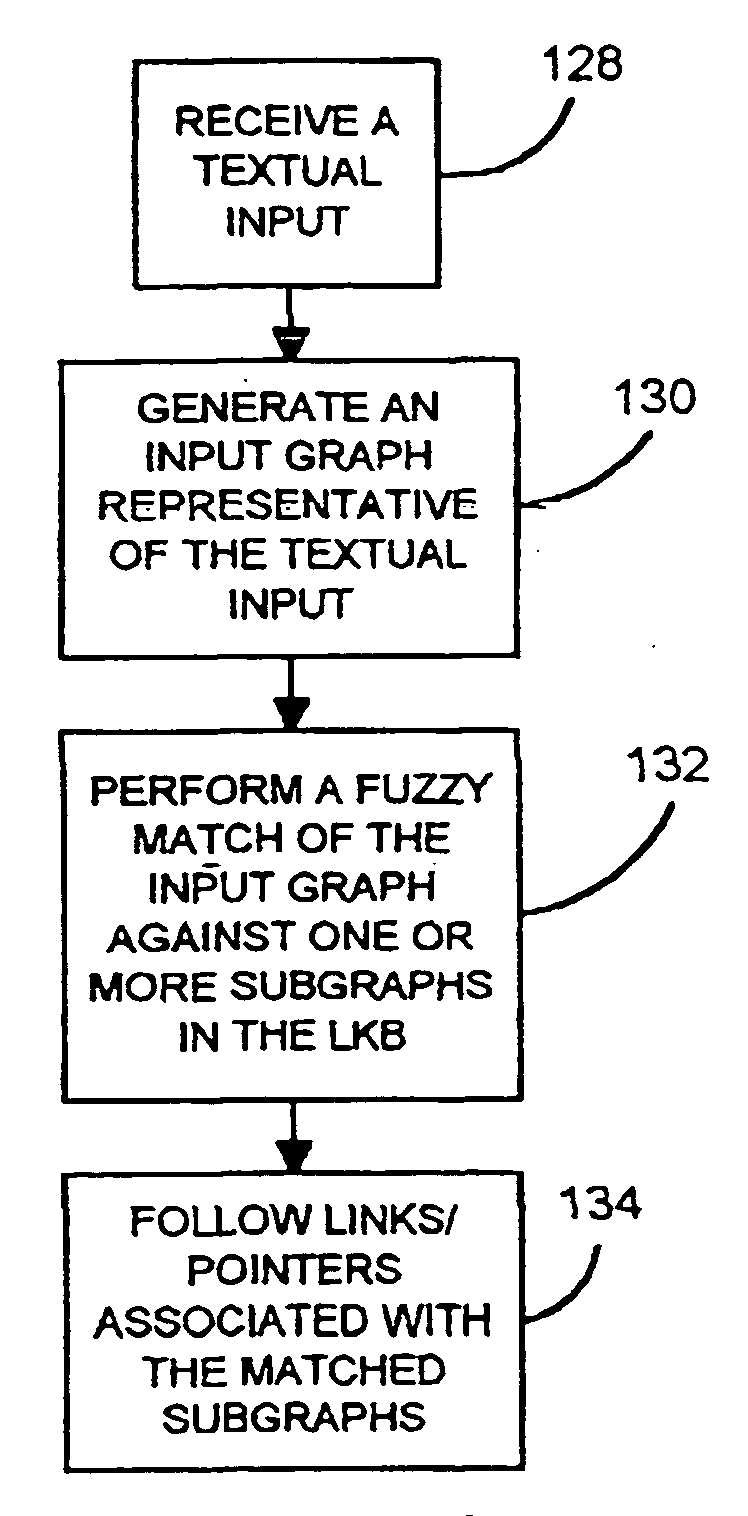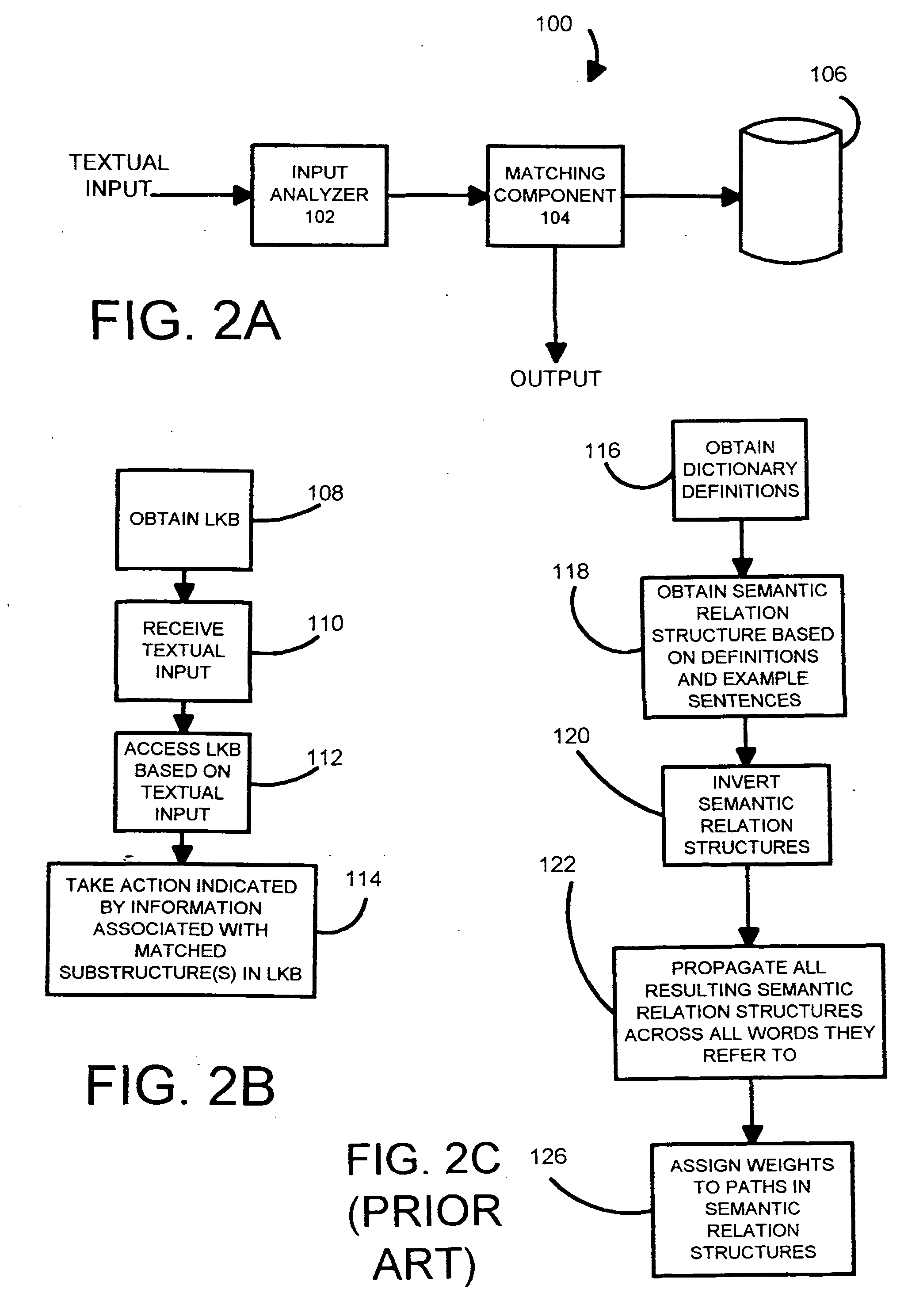System and method for matching a textual input to a lexical knowledge based and for utilizing results of that match
a technology of lexical knowledge and system and method, applied in the field of system and method for matching a textual input to a lexical knowledge based and utilizing results of that match, can solve the problems of word sense disambiguation, system has great difficulty in understanding the input text well enough, and the problem of paraphrase identification
- Summary
- Abstract
- Description
- Claims
- Application Information
AI Technical Summary
Problems solved by technology
Method used
Image
Examples
Embodiment Construction
The present invention is directed to matching logical graphs which may differ from one another lexically or structurally. A logical relation consists of two words joined by a directional relation type (e.g. Part, Time, Hypernym, Logical-Subject) Prior to beginning a detailed discussion of the present invention, a number of terms used throughout the specification will be_discussed. A semantic relation relates the meaning of a pair of words in a well-defined way, using a directional relation type. For example, the following relation indicates that the noun “boat” occurs as the subject of the verb “float”: boat LogicalSubject—float.
This semantic relation is said to have the relation type “LogicalSubject.” Relation types include many common relations in meaning, such as: Cause, Domain, Hypernym, Location, Manner, Material, Means, Modifier, Part, Possessor, Purpose, QuasiHypernym, Synonym, Time, LogicalObject, LogicalSubject, and User. A lexical knowledge base, described in greater d...
PUM
 Login to View More
Login to View More Abstract
Description
Claims
Application Information
 Login to View More
Login to View More - R&D
- Intellectual Property
- Life Sciences
- Materials
- Tech Scout
- Unparalleled Data Quality
- Higher Quality Content
- 60% Fewer Hallucinations
Browse by: Latest US Patents, China's latest patents, Technical Efficacy Thesaurus, Application Domain, Technology Topic, Popular Technical Reports.
© 2025 PatSnap. All rights reserved.Legal|Privacy policy|Modern Slavery Act Transparency Statement|Sitemap|About US| Contact US: help@patsnap.com



